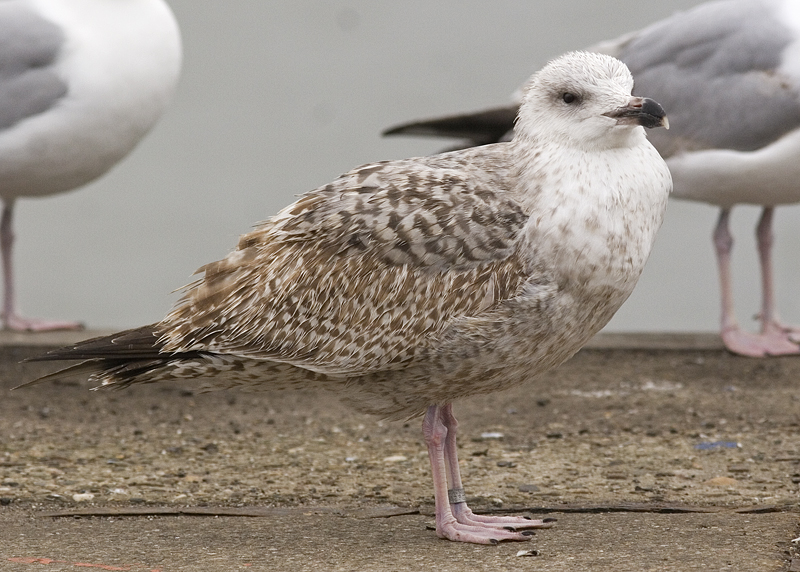 Gulls in NW Europe
Gulls in NW Europe
(last update: September 25, 2011
Herring Gull 1-2cy (argenteus) NLA 5.429.287 2010-2011, IJmuiden, the Netherlands.
Ringed at IJmuiden, the Netherlands, on 31 August 2010; released after taken into hospital.
below: 5.429.287 (argenteus) September 19 2010, IJmuiden, the Netherlands. Picture: Maarten van Kleinwee.
First-calendar year (first cycle) European Herring Gull in full juvenile (first basic) plumage. Note the pink base of the bill. This individual was kept in a bird centre for a few days, where it was also fitted with the metal ring.
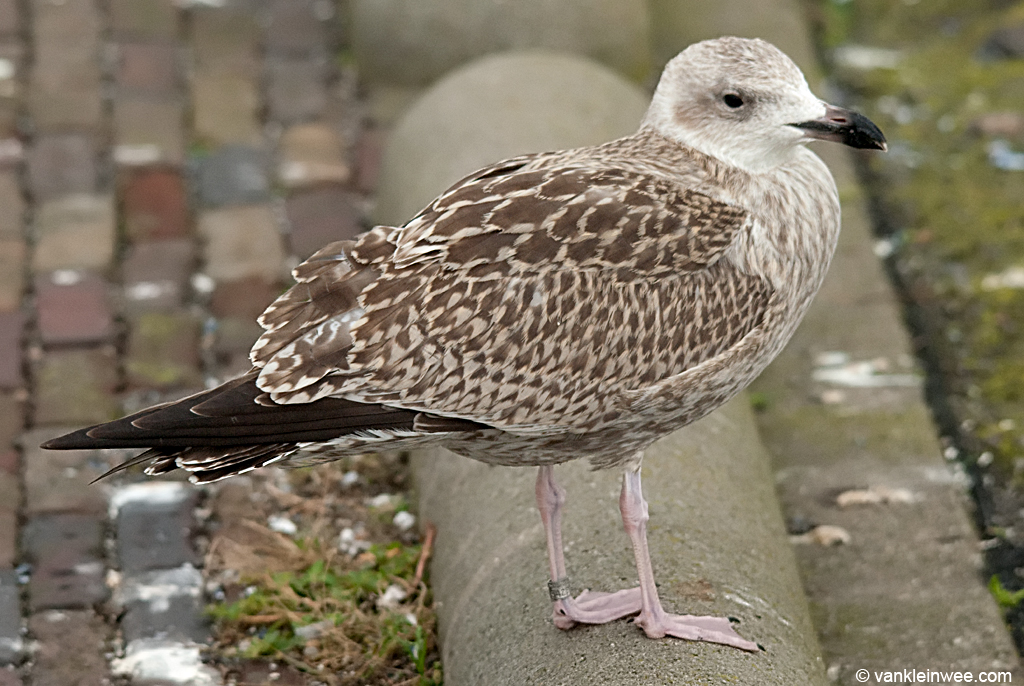
below: 5.429.287 (argenteus) October 10 2010, IJmuiden, the Netherlands. Picture: Maarten van Kleinwee.
First-calendar year (first cycle) European Herring Gull moulting to first-winter plumage (first prebasic moult). Some of the upper scapulars have been replaced with second-generation feathers. This individual was kept in a bird centre for a few days, where it was also fitted with the metal ring.
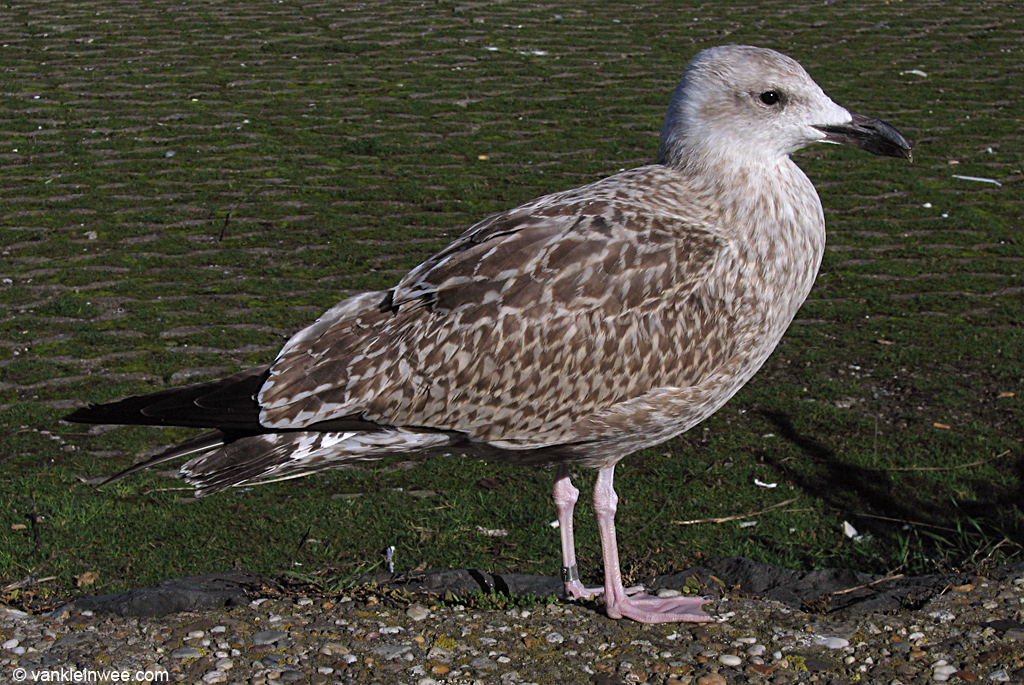
below: 09 December 2010
US: 75-99%, LS: 25-50%, TOT SCAPS: 50-75%. Coverts and tertials juvenile.
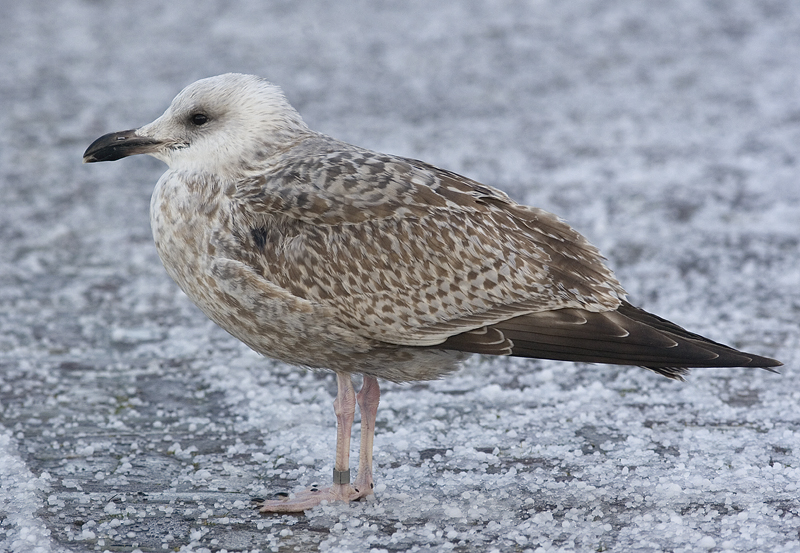
below: 28 January 2011

below: 5.429.287 (argenteus) February 20 2011, IJmuiden, the Netherlands. Picture: Maarten van Kleinwee.
Second-calendar year (first cycle) European Herring Gull in first-winter (first pre-alternate) plumage. Second-generation mantel and scapulars, showing a light-brown base and a dark anchor pattern. The first-generation coverts and tertials are now worn, especially noticeable in the tertials where the fringes are worn away. The head, throat, and foreneck are much paler as a result of moult and wear.
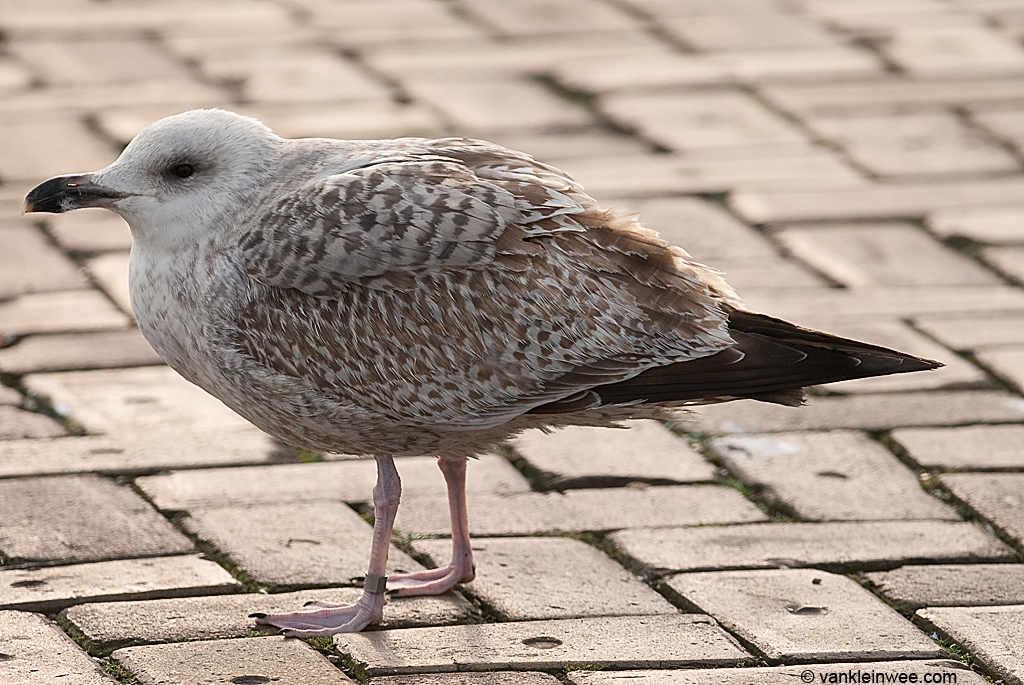

below: 04 March 2011
US: 100%, LS: 75-99%, TOT SCAPS: 75-99%. Coverts and tertials juvenile.
